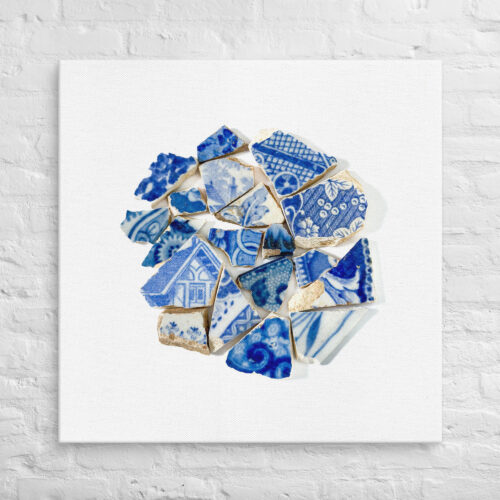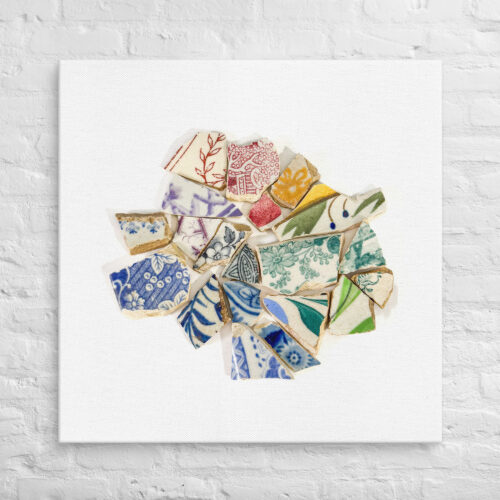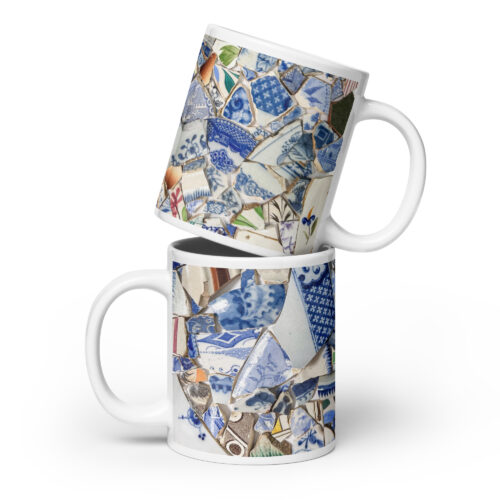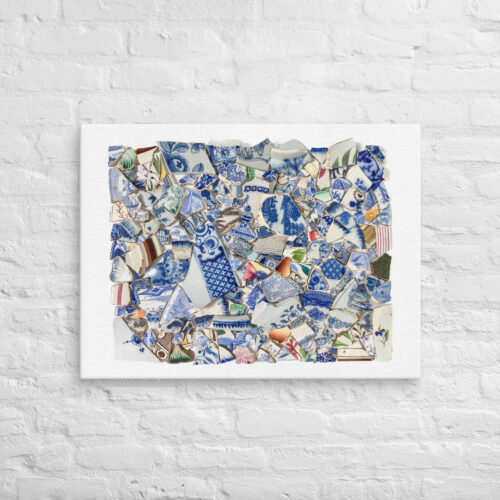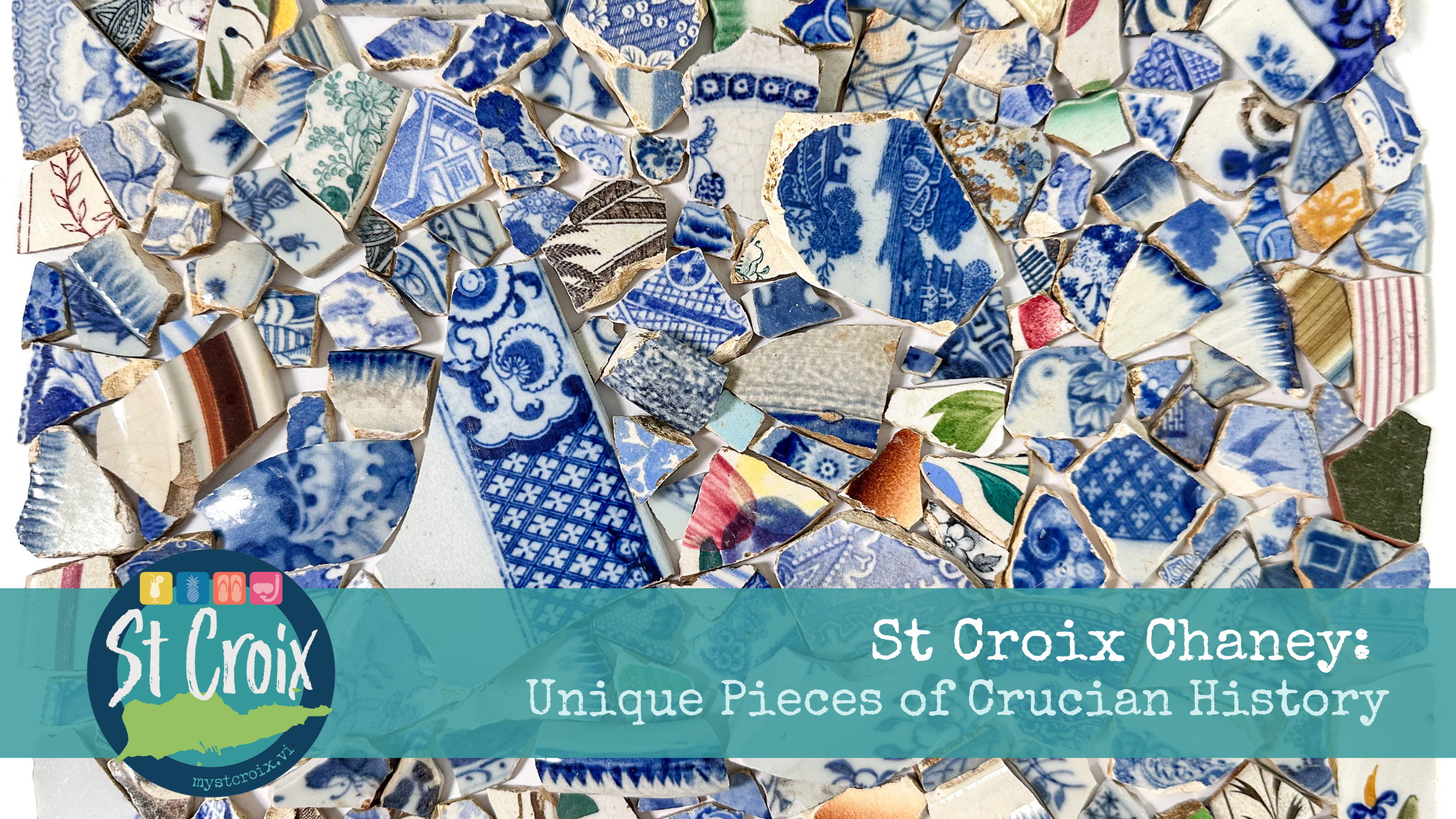
St Croix, the largest of the U.S. Virgin Islands, is a treasure trove of history and culture. Among its many fascinating stories is “chaney.” St Croix Chaney consists of colonial pottery shards that have been unearthed and then transformed into beautiful jewelry and other items. These aren’t just pottery shards from across the centuries, they are tangible pieces of St Croix history that capture the island’s rich heritage and unique charm.
What is Chaney?
Whether you’re a history buff or a jewelry lover, chaney offers a unique way to experience Crucian heritage. Found colonial pottery fragments, lovingly known as chaney, mostly date back to the island’s bustling plantation days.
The island of St Croix has been ruled under seven different flags including Spain, England, The Netherlands, France, the Knights of Malta, Denmark, & the United States.
And since 1493 when Columbus first made contact with the indigenous inhabitants of the island, there have been varying classes of people from the very wealthy to the very poor and enslaved that came from numerous places around the world. They brought with them their customs, their culture, and their wares. The vast variety of different pottery shards found across the island tell the story of the people who shaped the island we know today.
Each piece of chaney has its own story. I often like to hold them and think about where they came from, who made them, and about the people who used them before they were broken apart. Was the piece I’m holding part of a plate used for fancy celebrations and holidays by some wealthy family? Or was it part of a teacup that was used daily by a local tradesperson or merchant? Or – in all seriousness – am I holding a piece of a historical chamber pot? Ha!
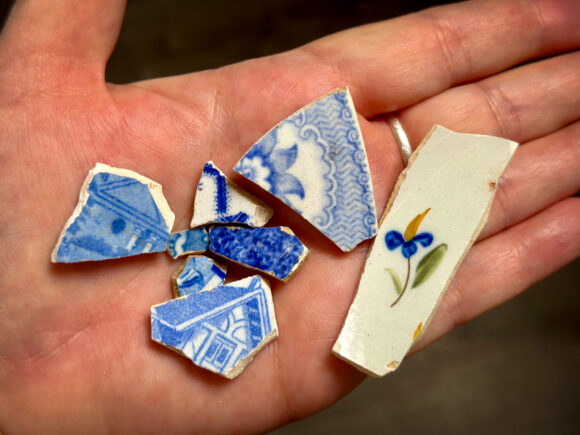
As you walk along St. Croix’s streets and beaches, you’re literally stepping over layers and layers of history. And if you’re lucky enough to look down while walking after a heavy rain or snorkeling offshore, you may just find a piece of that history yourself.
The Story Behind St Croix Chaney
In the 18th and 19th centuries, fancy imported china was a big deal. It was a status symbol. Some of it was brought to the island on ships that were part of the colonial Trans-Atlantic Trade Triangle. Ships from Europe carried finished goods like pottery, furniture, cloth, etc. Some traveled first down to Africa where they traded some of the goods for gold, ivory, spices – and enslaved people. The ships that carried the enslaved, then made their way across the Atlantic as part of the brutal Middle Passage. A very dark part of our collective history.
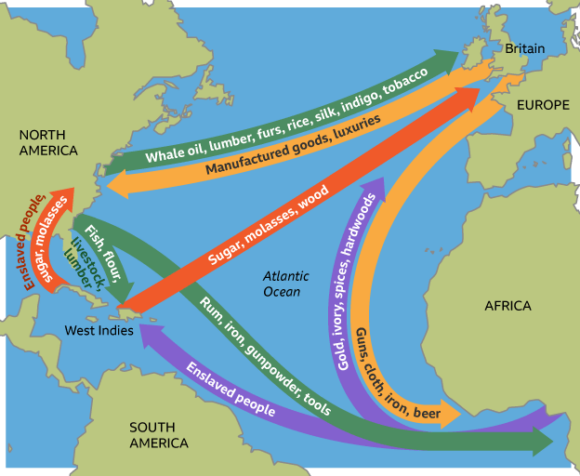
As cargo ships arrived in the Caribbean, they traded and sold human chattel as well as the goods they carried for money, sugar and molasses, along with other raw materials found in the islands. These goods were then transported up to the colonies (now United States) or straight back across to Europe. And while the enslaved across the Danish West Indies were emancipated in 1848 after an uprising on St Croix – trade with Europe for goods and raw materials continued well past.
Ceramic pottery wasn’t only purchased and used by the plantation owners, though they owned and displayed the finest pieces as a status symbol. Tradesmen, merchants, freed Africans, and the enslaved purchased pottery at local markets that was used for dishes, storage containers, etc. So, there was a wide variety of ceramics from very fine porcelain to more sturdy earthenware.
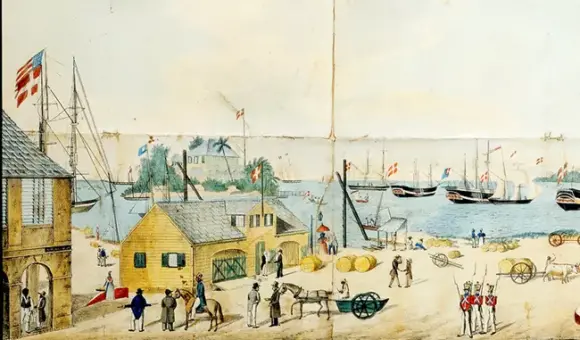
Image courtesy of the Danish Maritime Museum
When dishes and other pottery was broken, it got tossed into a midden – a trash pile in the backyard or nearby – only to be uncovered years or centuries later as a result of new construction or storms that loosened the earth and revealed them again. Alternately, some pieces that are found when snorkeling were tossed overboard to avoid taxes when ships came into port or washed in from shipwrecks. And some, inevitably, are broken bits from historical uprisings and riots. In fact, damaged ceramics were the most reported damaged goods following the Emancipation uprising in 1848 and The Fireburn of 1878. Chaney itself is a symbol of the complex entanglement of colonialism and resistance.
But, these little tokens of history were not to be left buried and lost to the passing of time. Over the past century, children often found them and brought them back to new life through their imagination. They find the pieces and then smooth out the edges by rubbing them along rocks to make them rounder, like coins. And then they used them as play money. Hence the Crucian Creole name “chaney” – a blend of “china” + “money.”
Turning Chaney into Jewelry & Other Art
These days, talented local artisans transform chaney into stunning jewelry and other items. They carefully clean them and smooth out the edges to give them a new purpose. Each piece is truly a unique, handcrafted bit of St. Croix’s past that you can wear
or collect. By buying jewelry and other items created with chaney, you’re supporting our local artists and taking home a piece of our the island’s story and entwining it with your own.
Where to Find Chaney Jewelry on St Croix
Check out local jewelry shops in Christiansted and gift stores in Frederiksted, or browse online for a slice of St. Croix delivered right to your door!
But celebrating chaney isn’t just about picking up a pretty piece of jewelry; it’s about connecting with the vibrant history of St. Croix. These small pottery shards serve as reminders of the island’s complex history and the various cultures that have shaped St Croix’s identity over the centuries.
My Chaney Collection
Over the years, I’ve amassed my own coveted collection of chaney in varying sizes and colors. The detail and artwork has always inspired me and I wanted to figure out a creative way to display them without changing them permanently – because I’m a constantly mind-changing Gemini at heart. So, I decided to photograph them in some unique ways and I’m loving the results!
Shop St Croix Chaney Collection
-
 Blue House & Flower Garden Chaney Collection Wraparound Canvas$35.00 – $199.50
Blue House & Flower Garden Chaney Collection Wraparound Canvas$35.00 – $199.50 -
 Rainbow Flower Chaney Collection Wraparound Canvas$35.00 – $199.50
Rainbow Flower Chaney Collection Wraparound Canvas$35.00 – $199.50 -
 Rainbow Chaney Collection Square Wraparound Canvas$35.00 – $199.50
Rainbow Chaney Collection Square Wraparound Canvas$35.00 – $199.50
-
 St Croix Chaney Flowers White glossy mug$22.00 – $24.00
St Croix Chaney Flowers White glossy mug$22.00 – $24.00 -
 St Croix Chaney Collection Canvas$48.00 – $104.50
St Croix Chaney Collection Canvas$48.00 – $104.50 -
 St Croix Chaney Collection Jigsaw puzzle$27.00 – $39.00
St Croix Chaney Collection Jigsaw puzzle$27.00 – $39.00
Explore St Croix’s Historical Sites
Visit places like Estate Whim Plantation Museum and Christiansted National Historic Site to get a real feel for where these beautiful shards come from. Or, take a guided tour to dive deep into the island’s rich history.
Stay tuned for Part 2: Decoding The Styles of Colonial Pottery Found on St. Croix

